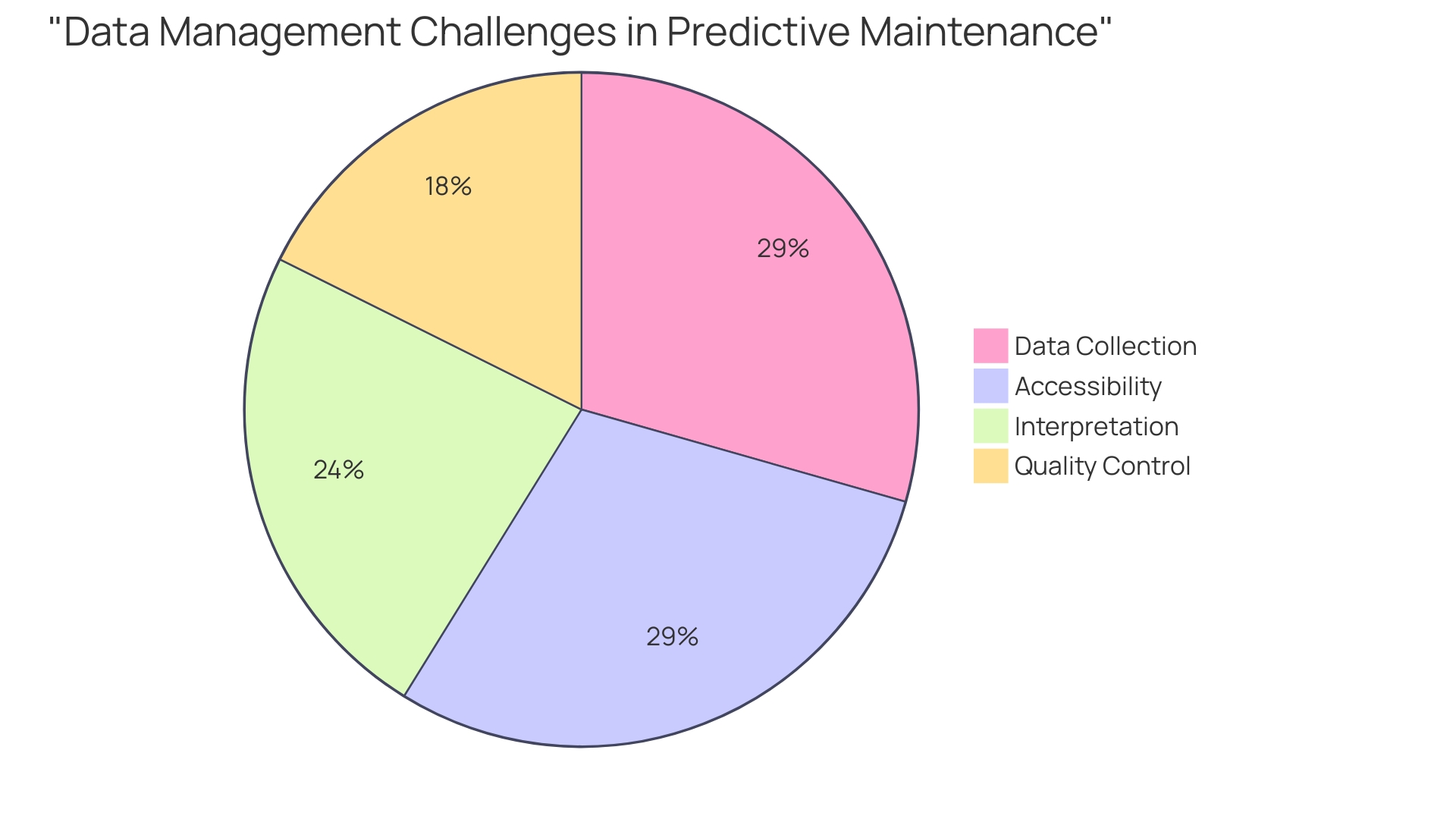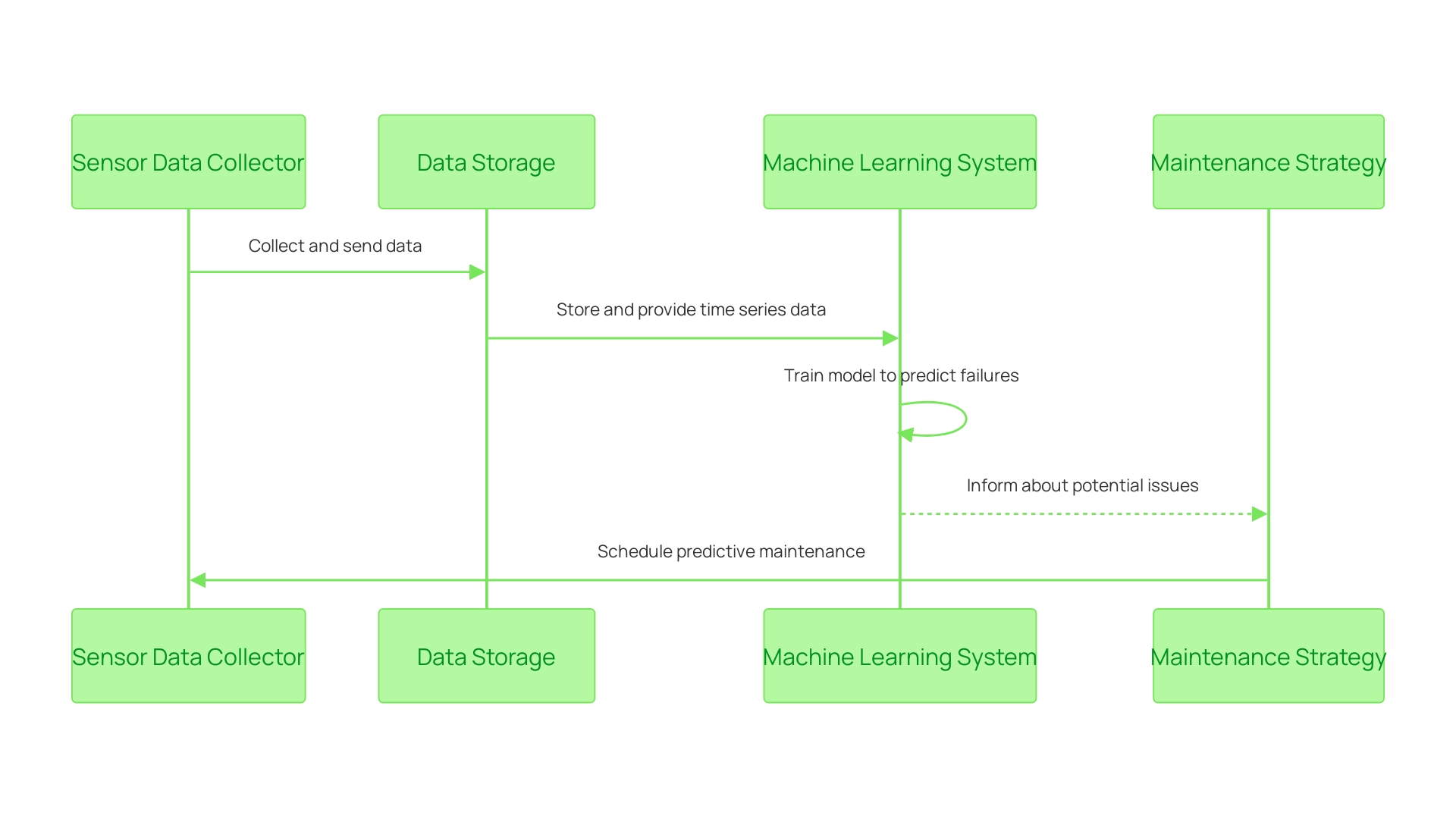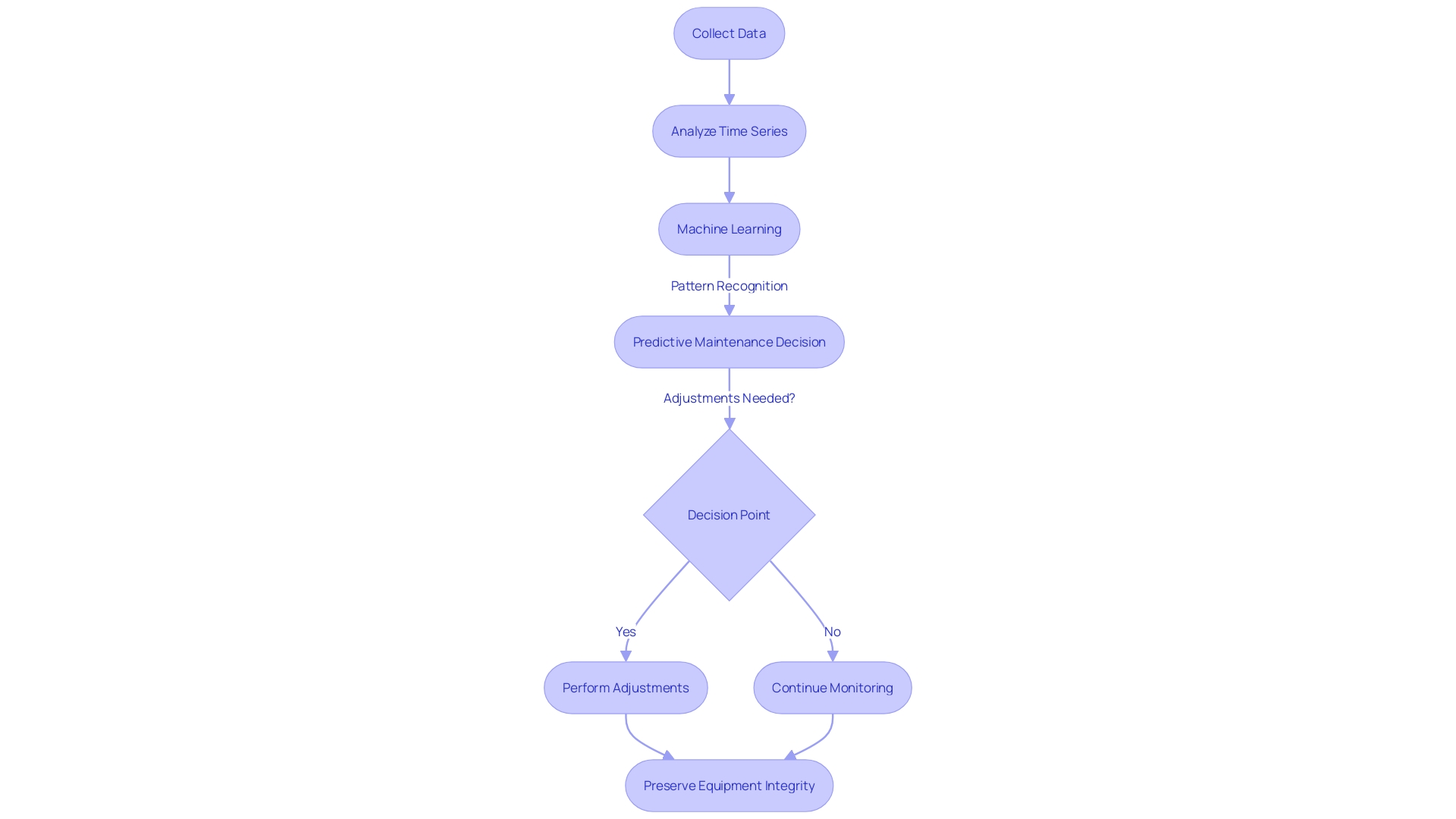Introduction
Predictive maintenance has emerged as a game-changer in the industrial landscape. Unlike traditional maintenance strategies that rely on reactive or condition-based approaches, predictive maintenance takes a proactive stance by leveraging advanced tools and technologies such as machine learning and time series data analysis.
By synthesizing multiple data inputs and detecting irregular patterns, predictive maintenance allows businesses to anticipate and prevent costly equipment failures. In this article, we will delve into the importance of predictive maintenance, key components of a predictive maintenance strategy, best practices for implementation, techniques for specific equipment, work order management, transitioning to predictive maintenance, preventive maintenance, advanced techniques, and real-world examples. Stay tuned to discover how predictive maintenance can boost operational efficiency and enhance asset management.
Understanding the Importance of Predictive Maintenance
Predictive maintenance represents a significant leap forward from conventional maintenance strategies. As Freddie Coertze elucidates, the essence of predictive maintenance lies in its comprehensive approach. Unlike condition monitoring which relies on single-parameter signals like vibration to flag potential issues, predictive maintenance synthesizes multiple data inputs - including vibration, temperature, pressure, flow, and electrical current - to paint a complete picture of asset health.
This proactive method allows for the detection of irregular patterns and the anticipation of detrimental behavior before it inflicts costly damage. The predictive method leverages advanced tools and technologies such as machine learning and time series data analysis. In the paradigm of machine learning, computers are trained on large datasets to identify trends, correlations, and governing principles autonomously, which then enables precise forecasting.
Time series data - sequential data points logged consistently over time - are particularly invaluable in predictive maintenance, encompassing a broad spectrum of applications from economic forecasting to weather prediction. The analysis of this temporal data is facilitated by specialized databases like InfluxDB, designed explicitly for storing and parsing vast quantities of data from networked devices. The adoption of predictive maintenance, underpinned by machine intelligence, offers businesses several advantages, such as enhanced equipment performance, fewer unforeseen failures, and ultimately, a boost in operational efficiency.
Key Components of a Predictive Maintenance Strategy
Implementing a predictive maintenance strategy transcends mere machine upkeep; it's an intricate process that begins with rigorous data management. An average facility accumulates substantial data daily, necessitating a fine-tuned system for collection, organization, and later retrieval.
As emphasized by experts like Ben Lawrence from Gecko Robotics, this data is the linchpin of predictive maintenance, playing a pivotal role in equipment longevity and reliability. Understanding patterns through high-caliber, robust data sets is essential for AI models to render accurate predictions.
Ai's logic-driven patterns offer prospects for heightened operational efficiency, cost reduction, and informed decision-making in industries such as oil and gas, where more than 92% of companies are considerably investing or planning to invest in AI. With such a commitment to embracing AI, the implications of data quality become ever so critical. To harness Ai's full capabilities for predictive maintenance, in alignment with Vladimir's vast experience in shaping data science and AI strategies, businesses must establish a solid foundation of premium-quality data to ensure the effectiveness and reliability of their predictive maintenance programs.
Best Practices for Implementing Predictive Maintenance
Crafting a predictive maintenance program involves much more than just setting up software; it's about embracing a data-centric culture. The emphasis is on training machine learning models using datasets that highlight temporal dependencies in equipment usage. By analyzing time series data, organizations can uncover not only what's failing but also discern patterns leading up to equipment failure.
Enormous data volumes, typical in robust infrastructures, necessitate intelligent analysis methods. Tools such as InfluxDB are crucial, as they allow the storage and interrogation of time-based data streams from network-connected sensors. To transition from traditional maintenance approaches to predictive models, facilities need to collect and manage data effectively.
Every day, a single facility might produce vast amounts of data points, and managing this effectively determines the success of predictive maintenance strategies. As Ben Lawrence from Gecko Robotics highlights, proper data management is not simply about collection but ensuring it is accessible and interpretable when required. Remember, the quality of data sets the foundation for trustworthy AI.
Poor data can lead to misguided analytics and flawed decision-making. Echoing the sentiments of industry experts, a shocking 92% of oil and gas firms are looking to invest in AI within two years, with the underlying intention being to boost operational efficiency and cost-effectivity. It's needless to say that for predictive maintenance to flourish and offer businesses its full array of benefits—including cost savings, efficiency improvements, and decision-making optimizations—it must be built on a solid base of high-quality, time series data analyzed by advanced machine learning algorithms.

Predictive Maintenance Techniques for Specific Equipment
The art of predictive maintenance has evolved with the incorporation of machine learning, where data informs the system to identify patterns and predict equipment failures before they occur. For example, bearings in machinery may exhibit specific vibration patterns that, when detected, signal potential issues. Using time series datasets, which are sequences of data points captured over consistent time intervals, machine learning models can scrutinize these patterns with exceptional precision.
This is critical in environments with a large infrastructure, where evaluating massive data sets for predictive maintenance could otherwise be daunting. Innovative data storage and analysis tools, such as InfluxDB, play a pivotal role in managing the torrent of data from networked devices. The application of such technologies enables a nuanced approach to asset management, extending the lifespan and reliability of critical equipment through informed maintenance strategies.

Work Order Management Best Practices for Predictive Maintenance
Optimizing work order management is pivotal for the success of predictive maintenance strategies. Best practices in this domain emphasize the importance of streamlined communication between teams, ensuring clear and efficient transfer of information.
Prioritization of tasks is also essential to tackle the most critical maintenance issues first, based on data insights. Embracing automation in work order processing can enhance accuracy and speed, relying on algorithms learned from data patterns and relationships.
Seamless integration with existing asset management systems is crucial for a holistic approach to maintenance, facilitating real-time data analysis and decision-making. Machine learning plays a significant role by analyzing time series data—a sequence of data points, collected over regular time intervals. Its application in predictive maintenance goes beyond traditional programming, as machine learning algorithms interpret large volumes of data to inform maintenance actions and future strategies, with tools like InfluxDB being instrumental for data storage and analysis in large-scale infrastructures.
Transitioning to Predictive Maintenance for Enhanced Asset Management
For businesses looking to shift from conventional maintenance strategies to more advanced predictive maintenance, the process is more than just a technical overhaul; it's a pivotal reimagining of asset management. This more sophisticated approach entails continuously tracking a variety of asset health indicators, including vibration, temperature, flow, pressure, and current, to anticipate potential failures and intervene early. Predictive maintenance is making waves across industries as it offers a comprehensive perspective on asset health, a contrast to condition monitoring which typically relies on a single parameter and may only alert you when damage has already occurred.
Leveraging the power of digital tools such as AI, machine learning, and advanced analytics, companies can parse these diverse data streams to detect subtle anomalies and predict asset degradation, ultimately streamlining operations and enhancing efficiency. As noted by experts, implementing these cutting-edge technologies isn't without its challenges—it requires equipping staff with new skills and ensuring integration with existing systems. Nevertheless, these technological advances are reshaping the manufacturing landscape to align with evolving consumer demands, driving companies towards digital transformation initiatives that offer customizations, competitive pricing, and swift delivery.
The roadmap to adopting predictive maintenance begins with crystallizing goals that align with improved asset monitoring and understanding the technological adoption challenges. Comprehensive stakeholder engagement and clear communication are crucial elements in managing this transition effectively. By focusing on the intersection of technical feasibility and business value, predictive maintenance paves the way for a significant uplift in productivity and operational agility.
Preventive Maintenance Best Practices for Long-Term Success
As businesses strive to optimize maintenance operations, preventive maintenance emerges as a critical strategy, working hand-in-hand with predictive maintenance to enhance equipment reliability. Best practices in preventive maintenance are not stagnant but evolve with the integration of machine learning and data analytics.
Utilizing machine intelligence to analyze time series data—regularly collected observations across intervals—enables the refinement of maintenance schedules. This approach leverages patterns detected in historical data to predict equipment needs more accurately, beyond routine inspections and straightforward lubrication tasks.
Machine learning transcends traditional programming, wherein explicit instructions give way to pattern recognition from datasets, teaching computers to discern relationships and forecast requirements. This modern methodology, combined with sophisticated tools like InfluxDB, streamlines the monitoring of equipment health indicators, underpinning proactive interventions. As Freddie Coertze observes, predictive maintenance provides a holistic view of asset health, tracking a constellation of parameters such as vibration, temperature, and pressure, which, in concert, herald potential anomalies and prelude degradation, facilitating corrective action before damage ensues. Ultimately, by embracing these advanced best practices, businesses stand to secure the longevity of their infrastructure, mitigating risks and upholding operational excellence.
Advanced Techniques for Predictive Maintenance
This section will explore advanced techniques and technologies that can further enhance the effectiveness of predictive maintenance. Topics covered include predictive analytics, machine learning algorithms, Internet of Things (IoT) sensors, and artificial intelligence (AI) integration. By leveraging these advanced techniques, businesses can stay ahead of maintenance needs and continuously improve their predictive maintenance strategies.
Real-World Examples of Predictive Maintenance in Action
In the sphere of maintenance, predicting when equipment needs attention before an issue arises, known as predictive maintenance, is revolutionizing the way businesses operate. Take Vladimir, a freelance consultant proficient in artificial intelligence, machine learning, and data science. He's adept at harnessing these technologies to enhance business processes and services.
Through his role at Luxoft, Vladimir crafted their data science and AI capability, infusing it with Luxoft's deep knowledge in the automotive domain. With an impressive background spanning semiconductor industry experience and management consulting, and holding both a Ph.D. in Electronic Design Automation and an MBA in Innovation and Business Creation, Vladimir brings a wealth of knowledge to the predictive maintenance arena. Freddie Coertze, an expert in the field, articulates the essence of predictive maintenance, "The word ‘predict’ is the clue to the core difference between condition monitoring and predictive maintenance.
With condition monitoring, you’re using one parameter – such as vibration – to monitor the condition of your asset... it will provide you with a notification if something is going wrong... But predictive maintenance... takes several parameters into consideration to determine the asset’s health and condition... allowing for intervention before costly damage." With predictive maintenance, not only can imminent issues be flagged before they escalate, but a more comprehensive 'health-check' of the asset can be established, enabling proactive adjustments and preserving the integrity of the equipment.

Conclusion
Predictive maintenance is a game-changer that allows businesses to proactively anticipate and prevent equipment failures. By leveraging advanced tools like machine learning and time series data analysis, organizations can optimize maintenance operations and enhance asset management.
Key components include rigorous data management, specific techniques for different equipment, effective work order management, and a transition towards a data-centric culture. By collecting and organizing high-quality data sets, businesses can make accurate predictions and informed decisions.
Techniques such as analyzing time series data and utilizing tools like InfluxDB enable organizations to identify patterns and predict failures with precision. Streamlined communication, task prioritization, and automation in work order management improve operational efficiency.
Transitioning to predictive maintenance involves continuously monitoring asset health indicators and utilizing digital tools like AI and advanced analytics. Clear goals, stakeholder engagement, and effective communication are essential for success.
Preventive maintenance complements predictive maintenance by enhancing equipment reliability. Machine learning and data analytics refine maintenance schedules based on historical data, maximizing operational effectiveness. Embracing advanced techniques like predictive analytics, machine learning algorithms, IoT sensors, and AI integration enhances the effectiveness of predictive maintenance strategies. In conclusion, predictive maintenance provides a proactive approach to equipment upkeep. By adopting data-driven techniques and best practices, businesses can optimize maintenance operations, maximize asset reliability, and gain a competitive advantage in the evolving industrial landscape.





